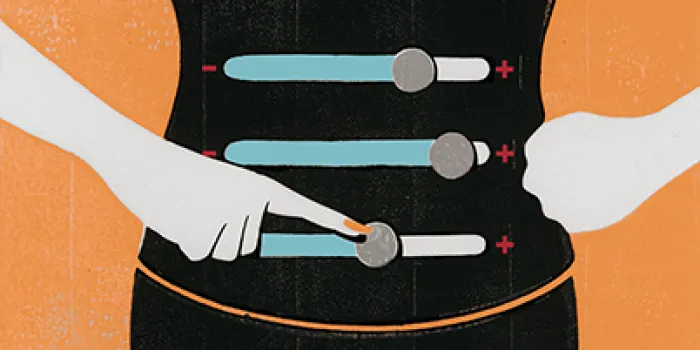Almost all teenagers and young adults wrestle at some point with the pressure to conform to an “ideal” body type, a concern that social media often exacerbates. For kids with bleeding disorders, insecurity about their appearance may be further complicated by a sense that their bodies are already different.
For parents, the challenge is to encourage their children to make healthy choices without conveying the message that they should strive for a certain body type. “Parents are our first teachers, so the messages they give are critical to their children’s self-image,” says Javey Dallas, MSW, a social worker at the Jimmy Everest Center for Cancer and Blood Disorders in Children in Oklahoma City.
To foster a healthy self-image in your children, follow these tips:
Educate them.
Get to know what diet culture, appearance ideal and weight stigma mean (see “Terms you should know,” below) and the effects they can have, and talk about them with your children. It’s also important to explain the role of genetics in body type, says Leslie Bloch, LCSW-R, a social worker in New York City specializing in body image and eating disorders. “Kids need to accept their particular body and size, and think in terms of what it needs to be healthy and thriving,” she says.
Focus on what they can do, not what they can’t.
Gerquetta Smith, of Charlotte, North Carolina, says it’s hard for her 17-year-old son to have restrictions on the activities and sports he can participate in—such as football or baseball, which can lead to injuries. As a result, he is prone to spending too much time sitting around watching TV and playing video games. Smith and her son decided to seek out a physical activity that he would enjoy but that wouldn’t compromise his safety. “He discovered that he loves being in the marching band, and it’s something he can do throughout most of the year,” Smith says.
Bloch says people tend to stop engaging in physical activity when it changes from something fun to something necessary. “The key is to find a way for your child to move in a way that is joyful,” she says.
Let them make their own choices.
As tempting as it can be to monitor your children’s eating and exercise habits, a better strategy is to gently encourage rather than push. “My son goes through phases where he will only eat salads and fruit,” Smith says. “I tell him to eat what he likes, but try to eat balanced meals and eat things like cookies and candy in moderation.”
Dallas stresses the importance of letting your children have autonomy and conveying that you believe in them to make good choices. “The way we treat our bodies now is the gift we give to ourselves for the future,” he says.
Terms you should know
Diet culture
The term for a system of beliefs that worships thinness, equating it with health and moral virtue, and promotes weight loss as a means of attaining an “ideal” body.
Appearance ideal
The idealization of specific body types. For women, this may mean being tall and skinny with long legs, and for men appearing tall, lean and muscular. (Keep in mind that idealized body types vary by culture.)
Weight stigma
Discrimination or stereotyping based on a person’s weight. Weight stigma can increase body dissatisfaction and self-consciousness about being “overweight.”

